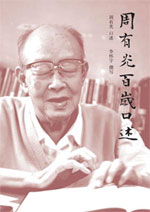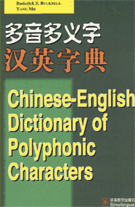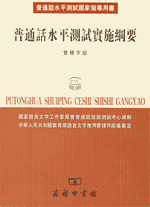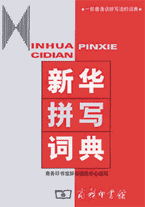The tongue-twisting tale of Mr. Shi, the poet who likes to eat lions (better known as the story that goes Shi shi shi shi shi… — see section 3 of that page), is often reproduced — though usually by people who misunderstand its meaning. (It is not an argument against romanization.)
I haven’t been able yet to track down just when and where Y.R. Chao (Zhao Yuanren / Zhào Yuánrèn / 趙元任) first published this. But what is particularly interesting, at least to me, is that this — probably the most widely known thing Chao ever wrote, outside the musical realm at least — is not entirely original to him but was inspired by another shi-story … by Chao’s roommate at Cornell.
Here’s an excerpt from “The Problem of the Chinese Language,” which Chao wrote in 1916.
I agree with Mr. Hu [Shih], therefore that living words are not intrinsically vulgar and that we should use them in writing. Secondly, whether we write with characters or with letters, we should use sounds that are at least auditorily intelligible. Differences between the spoken and the written languages do, and ought to exist in all languages, but the two must not be separated by a chasm. A poem must be recitable, an oration must be deliverable, not to oneself, but to others. I wager that if a poem is read aloud to a hundred educated persons of the same dialect as the reader, unless it is on a hackneyed them with hackneyed phrases, it will not be understood by more ears than one can count on his fingers — two ears to a person.
With one syllable shi and four variations of tones in northern mandarin, one can write a whole story. The example in 石1室1詩1士3史2氏3,嗜3豕2,失3仕3,誓3食1十1獅1。獅1似3嗜3虱1,史2氏3設1寺3,恃3師1勢3,使3施3氏3拾1獅1屍1。俟3食1時1,始2識1世3事3。史2使2侍3逝3適1市3,視3施3氏3。試3釋1是3事3…… was written by Mr. M. T. Hu. (Similar homonymic passages can be constructed in other dialects.) If we paraphrase it as in 石頭房子裏的詩翁,姓史的,愛吃豬肉,云云, we shall notice two points. First, the auditorily intelligible form has polysyllabic words for single ideas. Secondly, it uses better sounding syllables. Sin3 for surname, ai3 for like, chu1 for swine, are both more pleasant and less ambiguous than shi. Such spoken words as hao2 (good), men1 (door), yao3 (want), in their proper tones have no other common words of the same sound. This polysyllabism and the choice of sounds are the results of natural selection of speech sounds according to their survival value.
M.T. Hu stands for Minfu Ta Hu (also sometimes written Minfu Tah Hu), who went on to get his Ph.D. in mathematics at Harvard in 1917. (My initial guess was that he’s “Hu Minfu” and that his nickname is “da Hu”, given how there were several Chinese with the family name of Hu studying at Cornell at the same time. But he seems to have used the long form even in formal contexts.)
Here’s the text again without the tone numbers (which don’t correspond with current systems anyway, something that might make a good post (“Tone Wars and the Standardization of Guoyu/Putonghua”) but which I’ll probably never get around to writing). I’ve highlighted sections longer than two characters that also appear in Chao’s version (see below).
石室詩士史氏,嗜豕,失仕,誓食十獅。獅似嗜虱,史氏設寺,恃師勢,使施氏拾獅屍。俟食時,始識世事。史使侍逝適市,視施氏。試釋是事……
And here’s Chao’s version:
石室詩士施氏嗜獅,誓食十獅。氏時時適市視獅。十時,氏適市,適十碩獅適市。是時,氏視是十獅,恃十石矢勢,使是十獅逝世。氏拾是十獅尸適石室。石室濕,使侍試拭石室。石室拭。氏始試食是十獅尸。食時,始識是十碩獅尸實十碩石獅尸。是時,氏始識是事實。試釋是事。”(原文無標點)
So Chao certainly made this his own.
For more from the same essay, see Responses to objections to romanization, which is well worth reading.




 I didn’t have any luck finding anything in Sin Wenz (
I didn’t have any luck finding anything in Sin Wenz (


![beijing_bookstore sign in a Beijing bookstore reading 'Education Theury' [sic]](https://pinyin.info/news/news_photos/2009/07/beijing_bookstore.jpg)